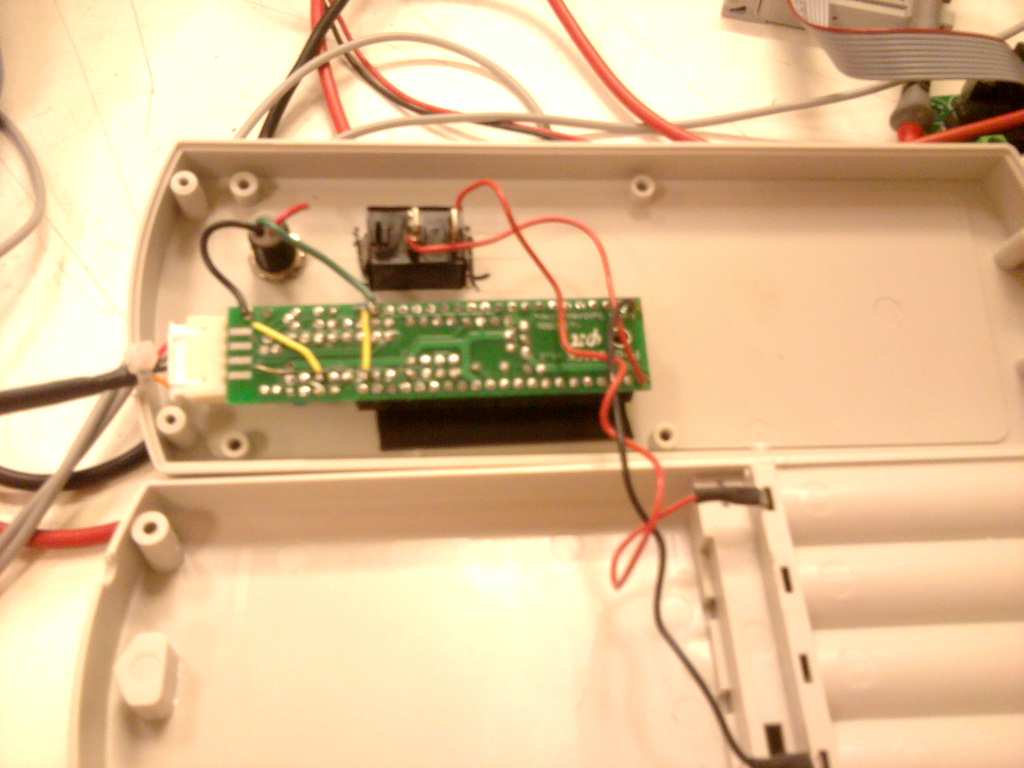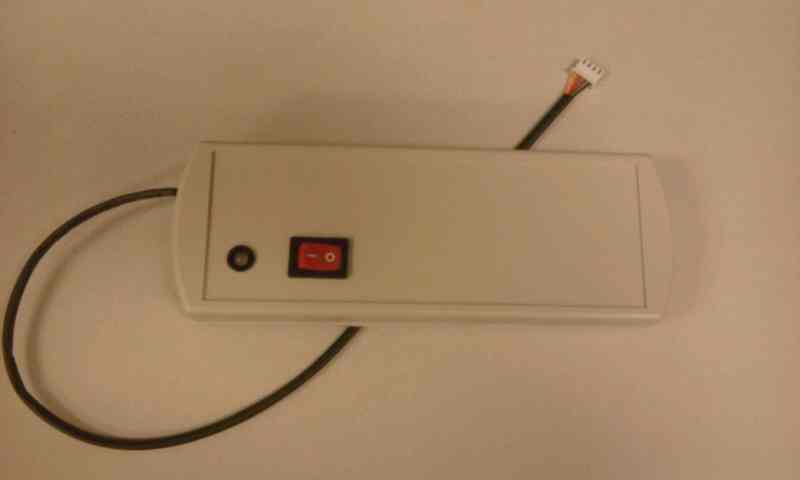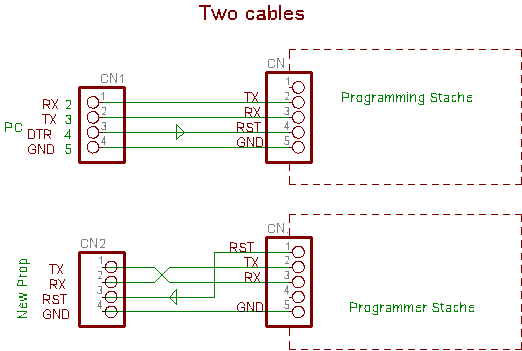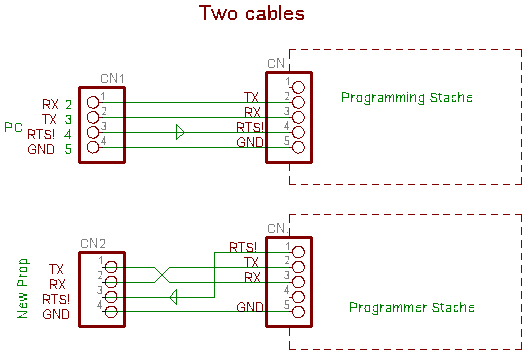Propeller Stache from a PropStick
I made a Propeller "Stache" from on old Bueno Systems "Propstick" I had in the drawer. Operation is as simple as possible. Plug it in and turn it on and it starts downloading the program.
Changes to Chip's PropellerLoader.spin:
A30 and A31 are used to both program the Stache and to send out the data to the target Propeller.
Pin A0, the new RST!OUT, is now connected to the MAX3232 pin11,T1IN. This was previously grounded and I had to cut away the top thermals on the ground plain of the board to free it up. T1OUT is connected to my pin 1 of the JST connector as the RS232 level RST!OUT.
Two different cables are used to connect it up. One to program and one to send data out. I did have a switch on the RST! line but it was too kludgy. Two cables are pretty much foolproof.
I also added COG1 blinking an LED (on pin A1) as COG0 is loading the program into the new Propeller to give the operator feedback. Once it completes loading it checks the error number and sets the LED on if no error and off if there was an error.
I put in a 24L512 eeprom just so I would have room for bigger programs, but it appears to just load the binary image.
Of course my thanks to Chip, Phil and Tracy.
Fuzzy pictures to follow:



Changes to Chip's PropellerLoader.spin:
error := loader.Connect(0, 30, 31, 1, loader#LoadRun, @loadme)
A30 and A31 are used to both program the Stache and to send out the data to the target Propeller.
Pin A0, the new RST!OUT, is now connected to the MAX3232 pin11,T1IN. This was previously grounded and I had to cut away the top thermals on the ground plain of the board to free it up. T1OUT is connected to my pin 1 of the JST connector as the RS232 level RST!OUT.
Two different cables are used to connect it up. One to program and one to send data out. I did have a switch on the RST! line but it was too kludgy. Two cables are pretty much foolproof.
I also added COG1 blinking an LED (on pin A1) as COG0 is loading the program into the new Propeller to give the operator feedback. Once it completes loading it checks the error number and sets the LED on if no error and off if there was an error.
I put in a 24L512 eeprom just so I would have room for bigger programs, but it appears to just load the binary image.
Of course my thanks to Chip, Phil and Tracy.
Fuzzy pictures to follow:







Comments
http://www.emesystems.com/stache.htm
Very cool device that Tracy made up a while ago, (2001?).
.
This one only does one program at a time. I suppose you could load multiple binaries and make them switch selectable. I haven't set down to figure the capacity.
Stache was Tracy's word and always stuck in my mind for some reason. I've built a couple of BS2 "Staches" over the years. Just a nice tool to have around when you need it.